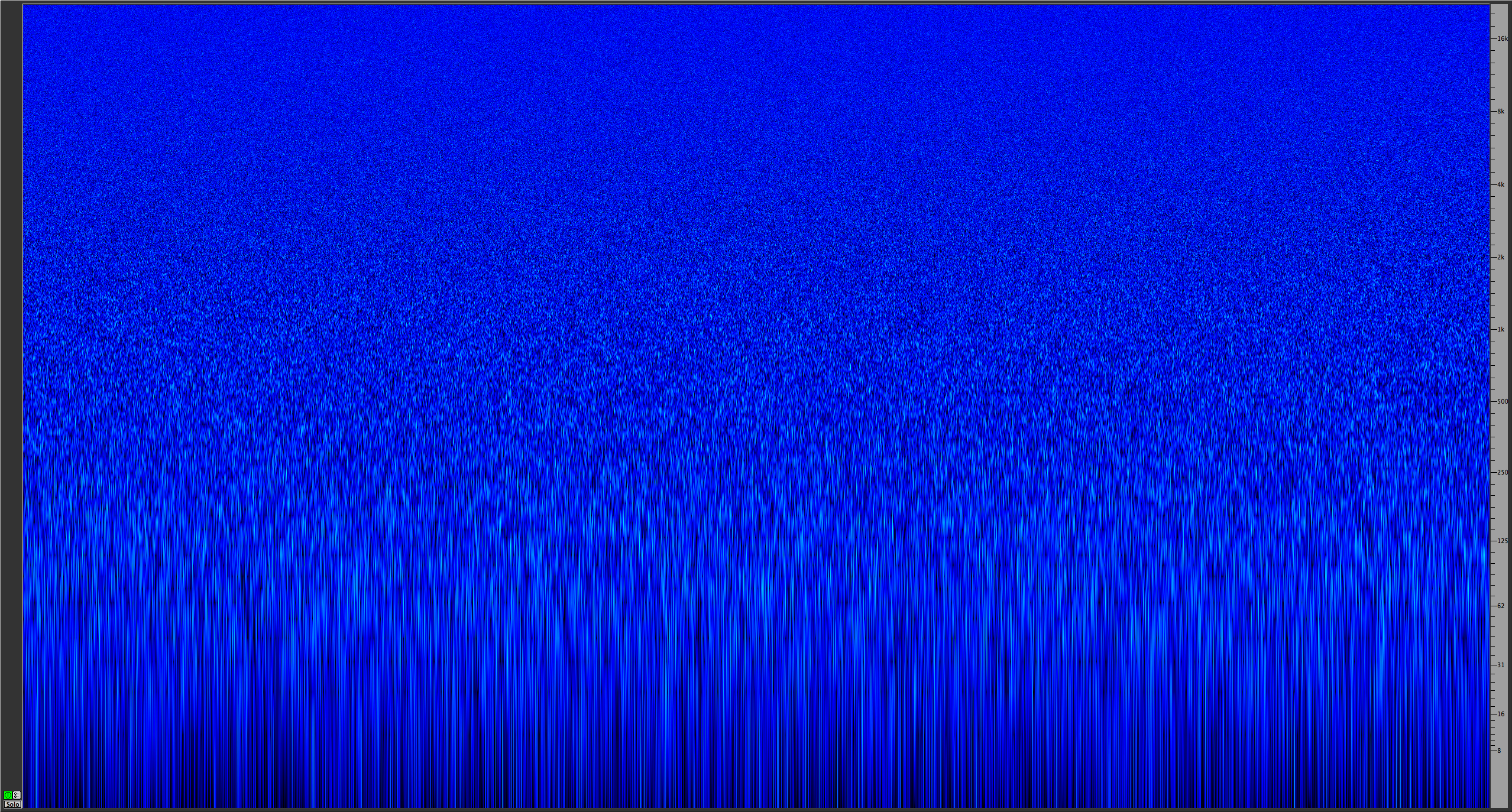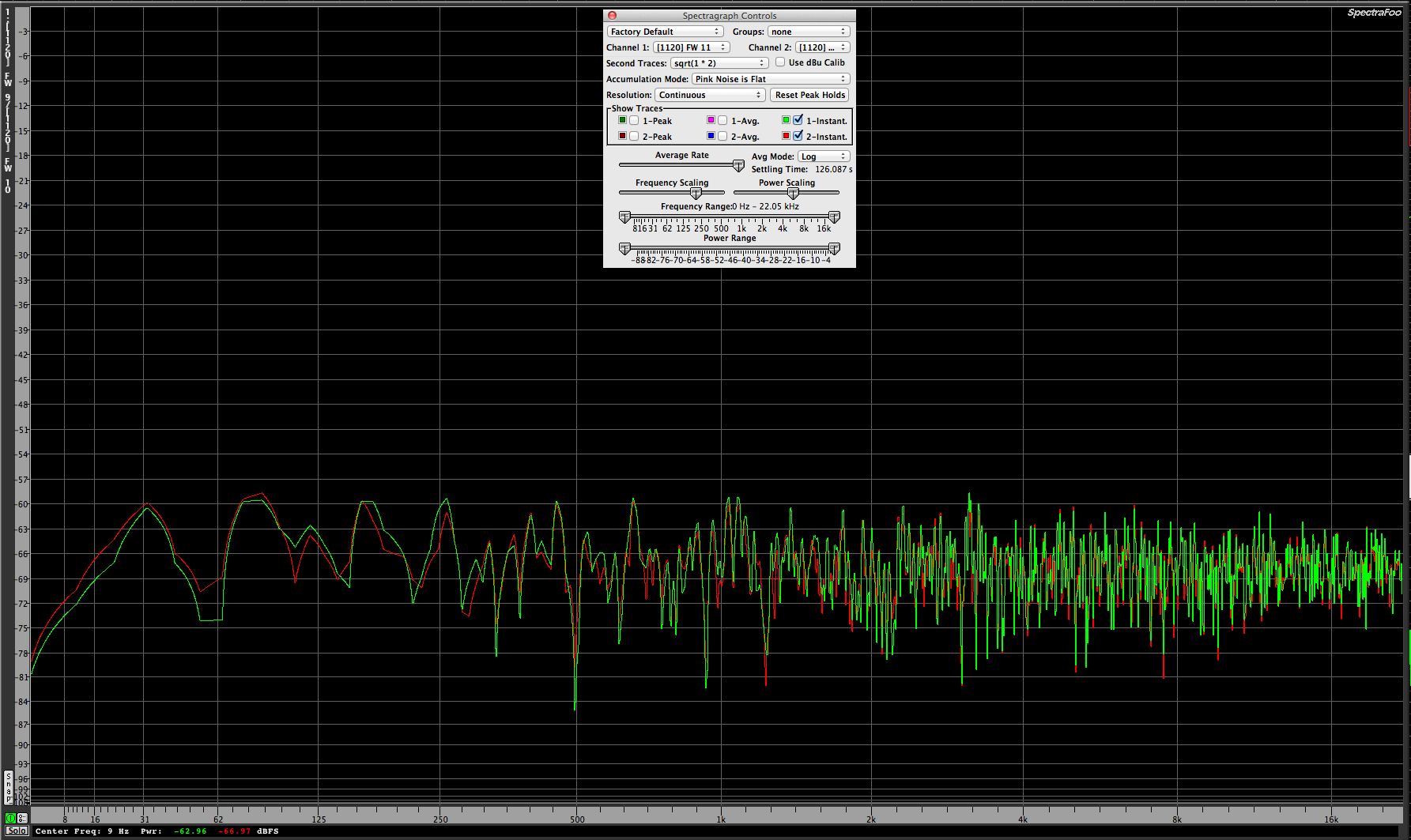Pink Noise is generated & injected into a sound system to provide a baseline with which to measure. All the FFT audio measurement software packages I’m aware of have built in pink noise generators. Many audio mixing consoles have built in pink noise generators. You can generate pink noise with most of the audio editing applications I’ve used. For example, the pink noise example below was generated using the audio editor TwistedWave. There are apps that will generate pink noise on your Iphone, Ipad, Ipod, etc…The one I have on my Iphone is called “Analyzer” & can do RTA, Transform Functions & Spectragrams. You can generate a file & then burn a CD if that is more convenient. Just make the track long enough to last without having to restart it over & over again. 60+ minutes should be sufficient:) Past that point the lighting crew will have voted you off the island anyway.
Here is a sample of pink noise. I generated it at a low level (-24db) so you don’t blow up your speakers / headphones when you click on the player. The file lasts for 10 seconds.
This is what pink noise looks like on a spectragram:
This is what pink noise looks like on a spectragraph:
One way or another, if you’re performing live audio measurements, you need some sort of pink noise source. With FFT measurements you need a way of referencing the noise at the right point in your audio chain. This could be at the output of the console or at the output of your audio interface.
A note of caution. Because pink noise includes frequency content through out the entire audio spectrum, it’s incredibly difficult to talk over. Consequently it’s very difficult to focus lights while pink noise is being used to measure. If your measurement process takes too long, your crew will mutiny. The goal is to be fast & efficient. I try to shut my noise off any time I don’t need it going. It’s easy to leave it on all the time but it’s cruel too. Typically there is not reason to have your pink noise any louder than just loud enough to become the loudest sound source at your microphone / microphones. You’ll know your pink noise is loud enough when your trace is no longer affected by other work that is going on around you. Keep it there unless the work around you gets louder. Be responsible when you pink!


